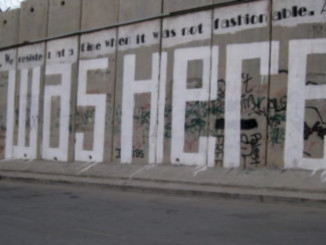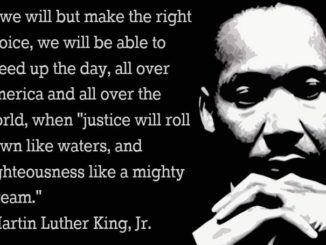
By Brian Wood
Dr. Ramzy Baroud’s latest book The Last Earth offers a long-absent Palestinian narrative voice available to readers of English and other foreign languages. His methodological approach to modern Palestinian history by blending oral interviews with written, narrative construction of the interviews is refreshing and vibrant.
While reading chapter four about Hana al-Shalabi, I was struck many times with my own memories of events she describes. Of particular note was the death of her cousin Shadi al-Nubani, who was killed during the Israeli invasion of the Jenin refugee camp commencing April 3, 2002.
Hana’s narrative did not offer details of the aftermath of Shadi’s killing. However, I will here supplement that detail of her incredible story as I have direct experience with Shadi’s situation after he was killed.
As with Hana’s narrative, what follows is rooted in lived experience. In narrating lived experience, the events in question have the ability to maintain integrity with the dynamics and emotions present as the events were unfolding at the moment and as such, provide clearer windows into the actual situations of people involved.
Thus, the reader is able to understand the situation in a more holistic manner than, say, an academic report on the circumstances could convey. Herein lies the importance of the historical method employed by Dr. Baroud, one that is hopefully mimicked by others in telling Palestinian history.
**
As an international volunteer, I entered the Jenin refugee camp on April 11, 2002. During the two months I lived inside the camp, I assisted with the recovery of Shadi al-Nubani. He and three of his companions were killed in the process of missiles from Apache helicopters striking the home they were in, the fire created on impact, and the entire roof and two walls crashing down upon them.
I saw one of those killed next to him at a time when the Israeli military was still in the camp. It was Monday, April 15, 2002, at four in the afternoon. We entered through the front door of the house and immediately ascended up a flight of 12 stairs to the second level. We walked to the right for five feet and turned to our left. There was the black and charred corpse of Abed Ahmad Hussein. A colored blanket rested ignorantly across this thing, barely recognizable as human except for the white toes.
When I came back to the site five days later, I learned that Shadi was still buried there. Behind the spot where Abed lied and totally buried under the concrete walls and roof was Shadi.
Like all of these recovery attempts, it was incredibly risky. Everyone was operating under a partially collapsed and possibly shifty ceiling, digging frantically by hand, with small shovels and one pickaxe. We went through numerous bottles of perfume, poured upon the surgical face masks covering each person’s mouth and nose, to assist with the most pungent odor available to humanity: death.
As the search came closer to Shadi’s body, one of his brothers appeared on the scene. He watched for a moment, dug for a moment, then watched some more. The look on his face was sullenly energetic and aware that his brother’s life ended in a horrible manner.
More than this was the impression that he was soon to be removed in parts, unable to be buried as the intact person he was only days before. The imposed transformation from a walking, talking, living human being to a burned, mound of pieces small enough to fit in a sack was, to me, a sign of the absolute ferocity of humanity.
Two gentlemen named Mohammed, both from the camp, both untrained in the recovery efforts they were engaged in, both with hearts of gold, dug ferociously at the rock and rubble hiding Shadi’s body. One was using a pickaxe after coming across what seemed to be a piece of wood.
The ax stuck into the wood, which turned out to be a door, and as the ax was raised for another swing, the door went up with it and Shadi’s body was spotted. Many people let out tapered yelps to communicate to Mohammed not to take another swing with the pickaxe as the body may be struck.
The ferocious digging with small tools slowed to a quiet recovery by hand. Both Mohammeds gathered rock and dirt by hand into a green, plastic bucket, which was passed to various people standing by ready to help and emptied away from the site of recovery. This process was repeated over and over and over, seemingly endlessly due to a shifting ceiling and more dirt and rock falling on top of the recovery area.
After some time the door was removed and the majority of Shadi’s remains were visible. Calls for the press rang out and photos were snapped of this once living being. His body was burned and charred like Abed’s, though instead of lying in the open air like Abed, he was entombed by the dirt around him. The smell cannot be described. If you have smelled one-week old death, you cannot describe it, nor forget it.
A part of his leg was pulled out and placed in the white, plastic body bag standing at attention. We pulled out parts and bones. Reddish-black material —a combination of blood, fire, and flesh—clung to everything removed, whose stench snarled faces like the sun shrinks grapes into raisins. The lower half of Shadi came out over the course of a half hour in pieces ranging from 18 inches to morsel-size. Every now and then a small pile of stuff would be held up for examination by untrained but empathetic eyes to determine if any part of the body was trying to escape.
After the most loving, cautious work over another 45 minutes, the majority of Shadi’s torso and skull were removed in one piece. This was one small victory for everyone there: to remove Shadi’s torso and skull together, rather than in pieces like the rest of him. The whole recovery process was a redemption of the cycle of the life of Shadi al-Nubani: recovering his remains, remembering his life, and preparing him for burial.
– Brian Wood lived in the West Bank of Palestine from 2000 – 2002. His final months were spent helping with disaster relief and conducting interviews with survivors of the destruction of the Jenin refugee camp in April 2002. In part, because of what he witnessed in Jenin refugee camp he chose nursing as an occupation. He contributed this article to PalestineChronicle.com.







